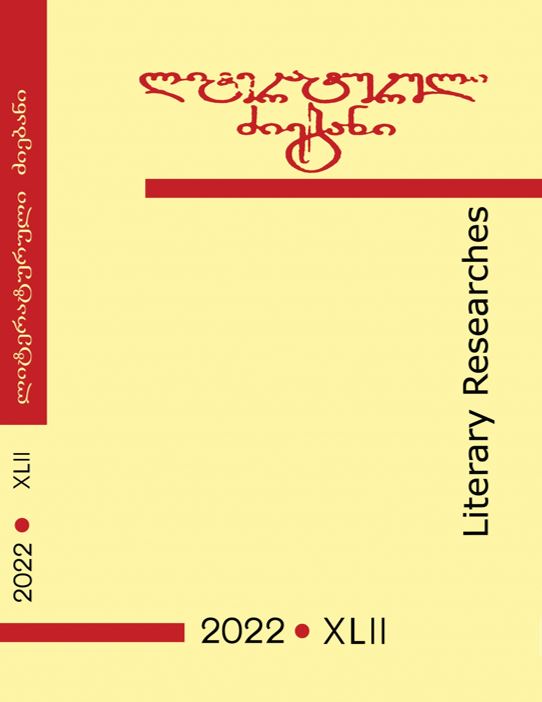Published 2022-04-30
Keywords
- Georgian prose,
- Guram Gegeshidze,
- Neorealist writers,
- Neorealist artistic vision,
- Innovative prose experiments
How to Cite
Abstract
This paper deals with the main trends of Georgian prose during the 1960s. It should be mentioned that after de-Stalinization of the Soviet space, the specimens of world literature became accessible, and the influence of Western writing reinforced. Georgian prose came closer to life, reflected the new social relationships. The focus shifted to the interior microcosm of an individual, the issue of public morality was brought to the fore, the language policy changed. National literature returned to the natural setting in which it developed, young writers felt the need to re-evaluate literary texts. Guram Gegeshidze, whose early prose is an attempt to stray away from social realism, became an outstanding author among innovative writers for his style of artistic thinking and multifaceted creativity. In our view, the neorealist tendencies can be clearly traced in the writer’s work.
Neorealism is a literary and cinematic movement originated in Italy in the 1940s and 1950s. Its followers set a goal to depict the objective reality without beautification, to establish the anti-fascist, national art. It encompassed art, architecture, music, cinematography and literature. Neorealist writers paid great attention to depicting everyday lives of ordinary people. The novel became the main genre, as well as the historical and memoir works.
Three main waves of neorealism are differentiated in European culture: English, Italian and French. One of the main features of Italian neorealist literature was its connection with cinematography, resulting in cinematic characters, events, and language. According to theorists, the roots of this new trend lie in Western European realism and Italian verismo.
The neorealist artistic vision is clearly seen in Guram Gegeshidze’s works, particularly in his early stories, which is expressed by the cinematography of characters, landscapes, events, and language. In these texts, like film frames, detailed, expressive descriptions of the environment and characters replace each other, vividly and clearly demonstrating the artistic reality of this or that story. Guram Gegeshidze’s long story The Persecuted (“Devnili”, 1968)
is distinguished by neorealist realities, at the very beginning of which the writer represents people and the landscape surrounding them in a concise, documentary manner. The images of the main characters are depicted in details, with cinematic clarity. The author’s description of the landscapes and environment in his novels revives before the reader the real space of the text, the protagonists, unfolds the author’s intention. Guram Gegeshidze
sympathizes and carefully observes the lives of ordinary people; his gaze reaches the depths of the personal tragedy of the hero and makes the reader sympathize with the misfortune of the common man. Guram Gegeshidze is an artistic chronicler of his time. With innovative prose experiments, he creates a unique, distinctive style in Georgian writing. At the same time, the prose
writer continues the best traditions of Georgian writing. Live dialogues add dynamism to his stories, new style is introduced, and the writer’s markers of contemporaneity are clarified. The “shift of emphasis” is clearly seen in the author’s literary discoursed who managed to throw off the shackles of socialist
realism. For him, the world is presented with different parameters and colors, and new realism becomes a reliable alternative to socialist realism. Thus, it can be said that Guram Gegeshidze, together with other outstanding writers of his generation, substantially changed the old system of artistic thinking.

